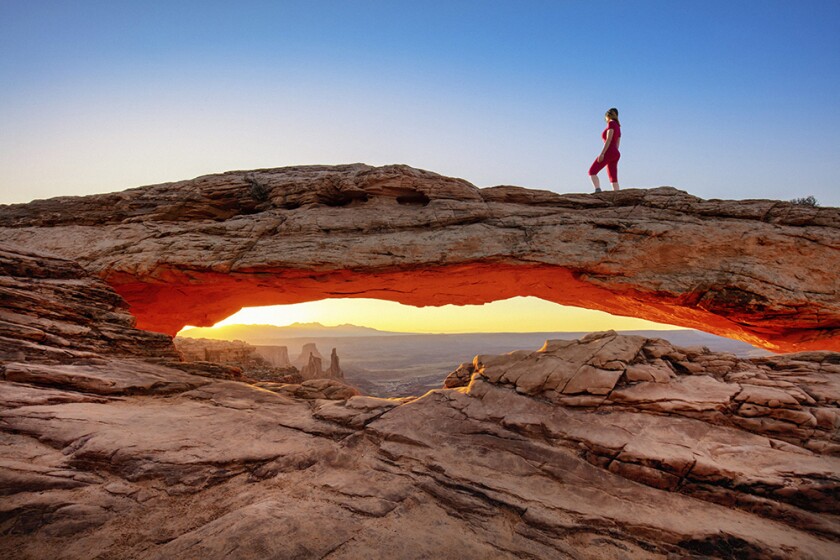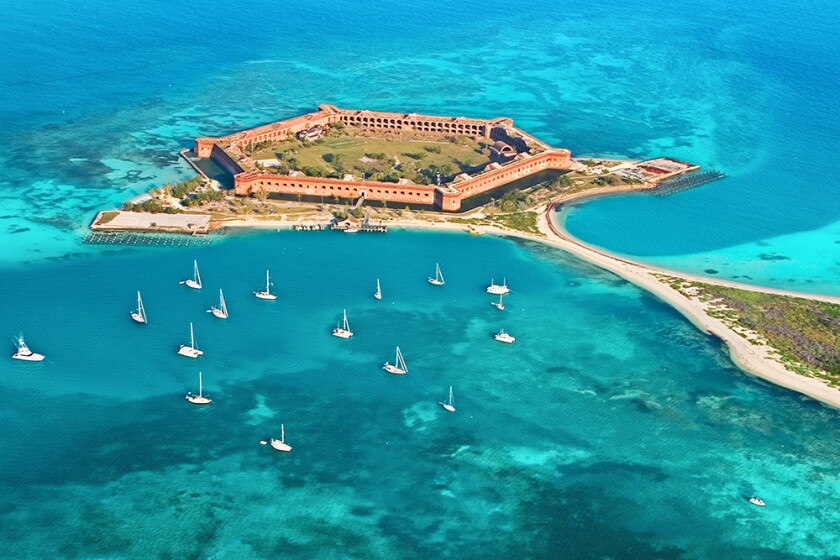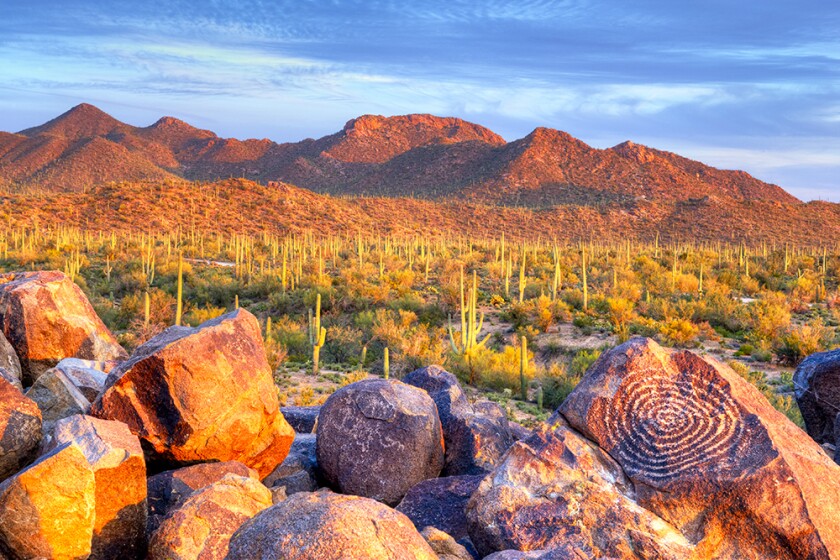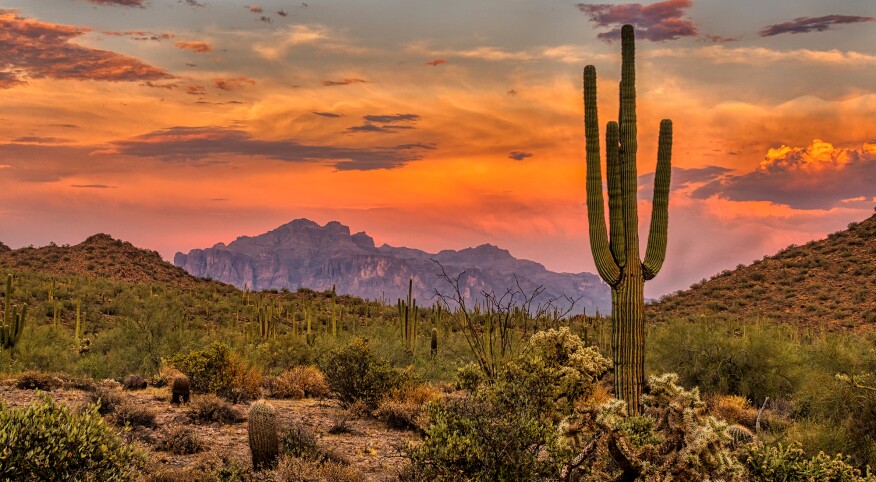Wanting an escape in nature, my husband and I traveled to several national parks. The traffic at Great Smokey Mountains fed my anxiety. Crowds blocked my view of Old Faithful at Yellowstone. Lines in Zion stole any sense of solitude. But five parks provided an idyllic sense of peace in spectacular settings. Check out these hidden gems.

- Canyonlands National Park, Utah
When most people think of majestic canyons out west, the remote red rocks of Canyonlands National Park typically don’t spring to mind. Canyonlands ranks as the least visited of Utah’s five national parks. The park has three distinct land districts, which require separate visits due to the distance between them. The Colorado and Green rivers create the fourth district. The Island in the Sky district is the most popular and offers easy access to paved paths, viewing points and hiking trails. Plus, thrill seekers can descend the Shafer Trail 1,500 feet into the canyon. Visitor’s tip: Stay in Moab for convenient access to both Canyonlands and Arches National Parks.

- Dry Tortugas National Park, Florida
Located 70 miles west of Key West in the Gulf of Mexico and about 100 miles from Cuba, Dry Tortugas National Park is accessible by boat, ferry or seaplane. The park’s name is “dry” because it has no fresh water sources and “turtle” in Spanish given the five different types in the area. Fort Jefferson, a massive structure used as a military prison during the Civil War, consumes most of the main island of this park. A small museum sits inside near the entrance. Visitors can explore the floors of the fort, relax on the small beach, swim and snorkel or dive to explore the coral reefs. Visitor’s tips: Late March through April can be best for birdwatching. Book the ferry well in advance. Our ferry ticket included breakfast, lunch, a tour and snorkel equipment.

- Saguaro National Park, Arizona
Divided into two sections (Tucson Mountain District in the west and Rincon Mountain District in the east), this park frames the city of Tucson. The park provides a home to over 25 species of cacti, including the famed saguaro. The iconic cacti take about 70 years to sprout arms and 150 years to reach their full height of between 40 and 50 feet and weight of 16,000 pounds. The east side has higher elevations and more diverse ecosystems than the west side, which has a higher density of saguaro. Both sides of the park offer scenic drives. Take a free ranger walk and learn about the vegetation and history involving the original Native American inhabitants, Spanish explorers and the Homestead Act of 1862, which opened the land to early settlers. Visitor’s tip: The saguaro bloom in late April through June.

- Kings Canyon National Park, California
Explore two adjoining national parks near Fresno: Kings Canyon and Sequoia. The more popular Sequoia is home to the General Sherman Tree, the largest tree by volume on earth. Kings Canyon has the General Grant Tree, the second largest. Another section of Kings Canyon is located past Sequoia National Forest. Along the Kings Canyon Scenic Byway to the park, see both glacier and river-carved canyons, each with distinct shapes. Drive along the remote Roads End until it ends near trails through the Sierra Nevada mountains. Hike to Mist Falls, one of the largest falls in the park. Visitor’s tip: The main entrance (Ash Mountain) to Sequoia has many switchbacks and curves. Begin at the Big Stump entrance instead and explore both parks from this point.

- Petrified Forest National Park, Arizona
Petrified Forest National Park is a geological wonder in a region known as the Painted Desert, located on the southern edge of the Colorado Plateau. A 28-mile road through the park can take several hours to experience. Stop to take short hikes, view petroglyphs and see a forest of petrified wood over 200 million years old. Blues, purples, greys and whites create a mesmerizing array of colors across the geologic formations and are a stark contrast to the vast grasslands in the park. Visitor’s tip: Before visiting, check the forecast for extreme weather (e.g., high winds, heat, monsoons or snow). Before deciding to explore a secluded desert, forest, or island, consider downloading the official National Park Service app. Get an “America the Beautiful” pass, and plan your adventure.
Want to leave the car behind? Here are national parks you can visit by bus.
What's your favorite national park? Let us know in the comments below.










